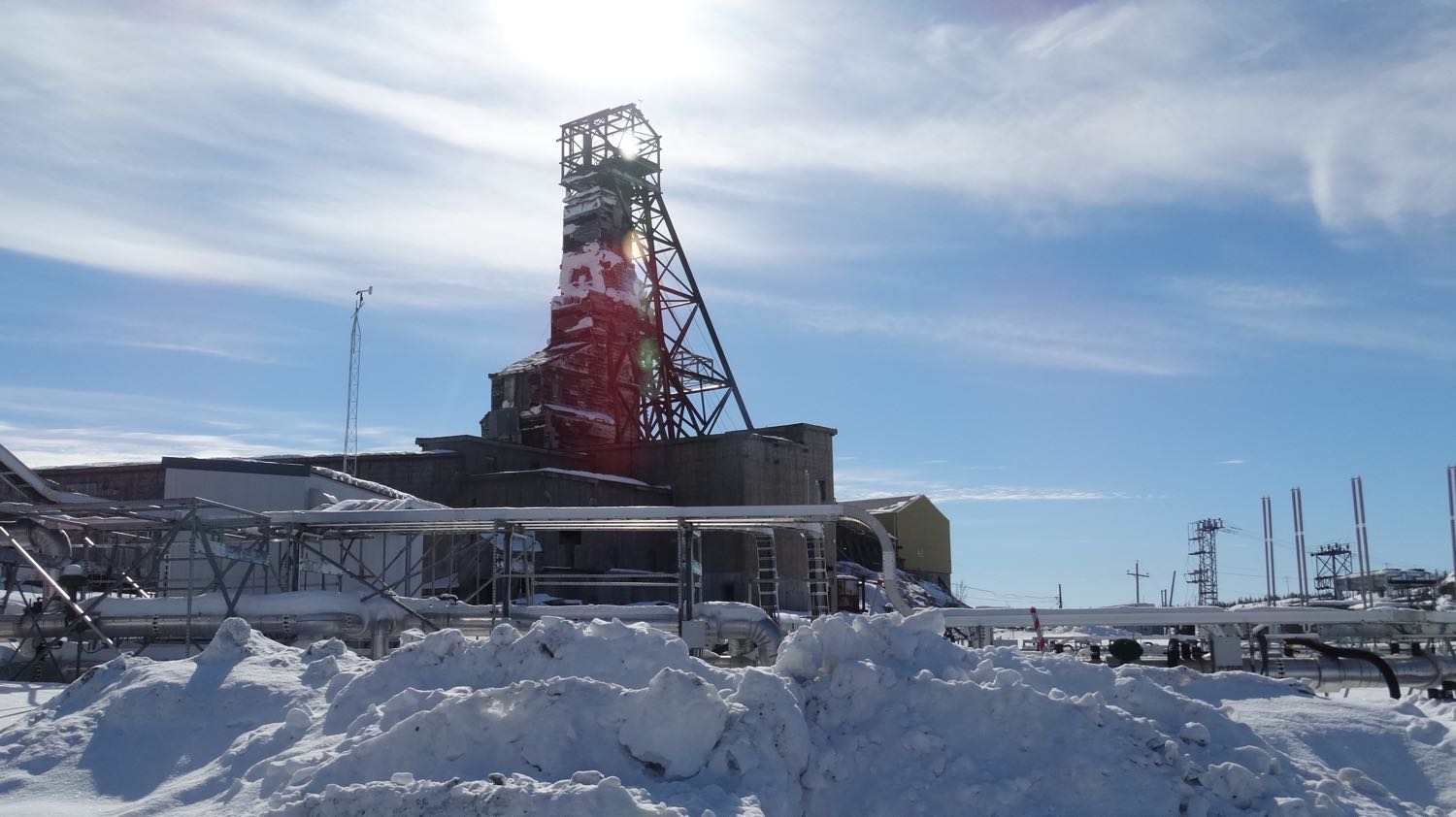The six people who will oversee federal government efforts to clean up Yellowknife’s Giant Mine have been named.
The Giant Mine Oversight Body was established earlier this year to promote public awareness of the project to remediate the contaminated former mine site, as well as offer independent advice to the federal project team and conduct research into better solutions for the arsenic trioxide problem at the mine.
On Tuesday, the six groups who form the oversight body each announced their first representatives on its board of directors.
Todd Slack, the body’s interim chair, was nominated by the Yellowknives Dene First Nation. Dr Stephan Gabos represents the North Slave Métis Alliance, Tony Brown sits on behalf of the City of Yellowknife and Ken Hall was chosen by the territorial government.
David Livingstone was nominated by Alternatives North and Ginger Stones represents Indigenous and Northern Affairs, the federal department responsible for the billion-dollar project to remediate Giant Mine.
In pictures: Giant Mine’s iconic headframe comes down
Stored beneath the old mine are 237,000 tons of highly toxic arsenic trioxide, a byproduct of the gold mining process undertaken at the mine for decades before it ceased operations in 2004. Currently, the remediation team plans to use cooling devices named thermosyphons to freeze the arsenic trioxide in place for a century or more.
The formation of the Giant Mine Oversight Body was a condition of an earlier environmental agreement regarding the mine remediation. One of the body’s tasks will be to steer research into a permanent solution for the arsenic trioxide, beyond keeping the toxic material frozen.
Slack is set to be replaced as chair by Dr Kathy Racher in January 2016.
Who are the people tasked with overseeing Giant Mine’s clean-up?
The Giant Mine Oversight Body provided these biographies of the initial six representatives on its board:
Ginger Stones
Ginger Stones has more than 30 years of experience working in the Federal Government and in the Canadian private sector. Ginger has in-depth knowledge and experience in managing a variety of clean-ups under the Federal program for contaminated sites. Her last position with the Public Service was that of Director General Environment for the Department of National Defense. While at DND, she was involved in the Distant Early Warning (DEW) Line clean-up in the Arctic. This was a $583 Million multi-year clean-up of 21 former radar sites, dealing with many issues similar to those in the Giant Mine Remediation Project.
David Livingstone
David Livingstone has worked in the north for nearly forty years and has made Yellowknife his home since 1987. He worked in several departments during his 33 year career with the federal government, holding different responsibilities but always focused on environmental and resource development issues in the north. Since leaving the federal government in 2009 Livingstone has been engaged in a wide range of environmental stewardship projects in the NWT, Nunavut and internationally.
Ken Hall
Ken was born in Yellowknife and grew up out at the Giant campsite, with a long history working and living at Giant. Ken holds diplomas in Ecology and Environmental Sciences from the Northern Alberta Institute of Technology and was the first environmental technician at Giant in the 1970’s. His career spanned the Arctic with government, finishing his career as the GNWT ‘s manager of environmental protection services in 2011. Working in both industry and public service with people from across the North has helped him develop a balanced perspective.
Tony Brown, M.Sc., P.Eng.
Tony is a Civil Environmental Engineer licensed to practice engineering in the Northwest Territories. He has 21 years of professional experience across a variety of disciplines, with a particular focus on northern contaminated sites management. His work typically includes the provision of strategic advice on: site characterization studies, preliminary options analysis, logistical planning, regulatory affairs, development of remedial options and monitoring.
Stephan Gabos, M.D.
Dr. Gabos has a broad range of scientific research interests including environmental toxicology and epidemiology, cytotoxicity, exposure assessment, biomonitoring, and health risk assessment. He was employed in a variety of research, administrative, and executive management positions with the Cancer Board and the Ministry of Health in Alberta, Canada. He continues his academic work as Research Scientist in the Division of Analytical and Environmental Toxicology, Faculty of Medicine, University of Alberta.
Todd Slack
Todd has worked in the natural resources field for 15 years, in Inuvik and Yellowknife. After completing a H.B.Sc. in Geography at Lakehead and an advanced diploma in Remote Sensing he started with the Inuvialuit in 2000. Since then Todd has worked for a number of Governments and different departments, most recently with the Yellowknives Dene.





